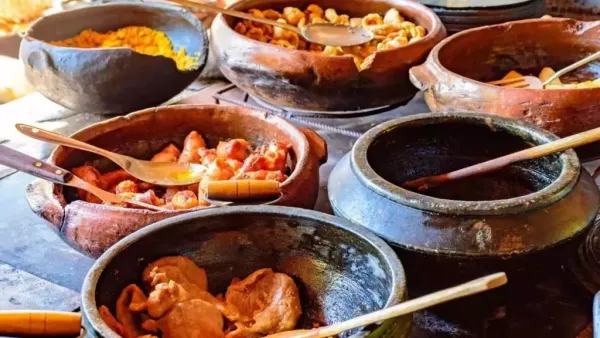
In the world dependent on refrigeration, innumerable remote communities around the world are flourishing even without electricity or modern equipment. What is their secret? Old age, the ways of environmentally friendly food protection, which are as effective as they are. These traditional practices that have been going on for generations prove that nature itself provides powerful measures to keep food refreshed.
These resourceful techniques not only reduce food deterioration, but also reflect deep respect for natural cycles. Here are seven tried food storage methods which are still in vogue, and provide a glimpse of knowledge of living an off-grind life.
1. Zeri Pots: Natural Earthen Fridge
Popular in dry areas like Africa, Middle East and Rural Rajasthan, zero pots-also called pot-in-pot coolers-are amazing refrigerators made of mitti. A small earthen pot is placed inside a large pot and the place between them is filled with wet sand. This vessel, covered with wet cloth, reduces temperature using evaporational cooling, which keeps vegetables, milk and cooked food fresh for one or two days.
2. Torks hanging over the flowing water
In hilly areas such as Himachal Pradesh and Uttarakhand, natural mountain streams are used cleverly to cool the early things that deteriorate. The food is placed in a mesh baskets or utensils and hanging it on top of the flowing water. Due to the continuous speed of water and the flow of air, this method keeps things cool, ventilated and protected from animals and insects.
3. Pour salt and dry in the sun
Long before the refrigeration, salt and sunlight were considered reliable patrons. In the coastal Kerala, Tamil Nadu, Ladakh and tribal areas of the Northeast, fish, meat and vegetables are preserved by adding salt and drying them in the sun. For example, salty mango pieces can be dried in the sun and kept for months, so that any dishes can be tasted later.
4. Cold with pottery
In states such as Gunjrat and Madhya Pradesh, pottery or mats are used to naturally cool things such as water, buttermilk and rice. These pores of vessels allow evaporation, causing the material to remain cold without power requirement. To increase the coolness, utensils are often wrapped in moist jute cloth and kept in shady corners. Airtight seal is avoided to give utensils “breathing”.
5. Storage in underground pits
In Kashmir and parts of Nepal such as cold areas, underground pits or basement provide stable, cooling environment for rooting vegetables and grains. This natural insulation keeps potatoes, carrots and millet refreshed without refrigeration.
6. Natural fermentation
The Himalayan region is known for his expertise in fermentation. Foods like Gundrouk, Sinki and fermented radish are not only protected without electricity, but are also rich in taste and nutrients. The fermentation is also good for the health of the intestine, making it a healthy storage technique.
7. Protection of ash and husk
In rural areas of Maharashtra and Odisha, ash and husk is used to increase the shelf life of root vegetables. Vegetables like turmeric, ginger, garlic and sweet potato are stored in a dried mixture of these ingredients and stored in baskets or earthen utensils. This does not accumulate moisture and prevents insect infections.
These centuries old techniques are serving millions of people living off-grind and offer them practical lessons of harmony with flexibility, stability and nature. In the era of rising energy concerns and food wast, it can be the way to move forward.
-
New OTT releases: from Housefull 5 to Bakaiti, top 5 films you cannot miss, 3rd on the list is…

-
Mukesh Ambani’s family to take major control over in Jio Financial Services, stake likely to go above…, crucial meeting today

-
TCS layoffs MASSIVE Update: IT union writes to Modi government, calls tech firm’s move…, Meity issues statement, says…

-
IND Vs ENG: Why Did Gautam Gambhir Get Into A Heated Exchange With Oval Pitch Curator Lee Fortis? Indian Batting Coach Gives Clarification

-
Telangana man in US dies of heart attack on boat trip
